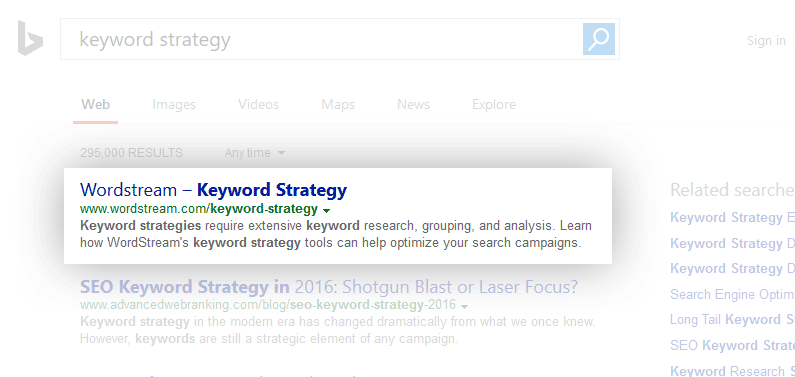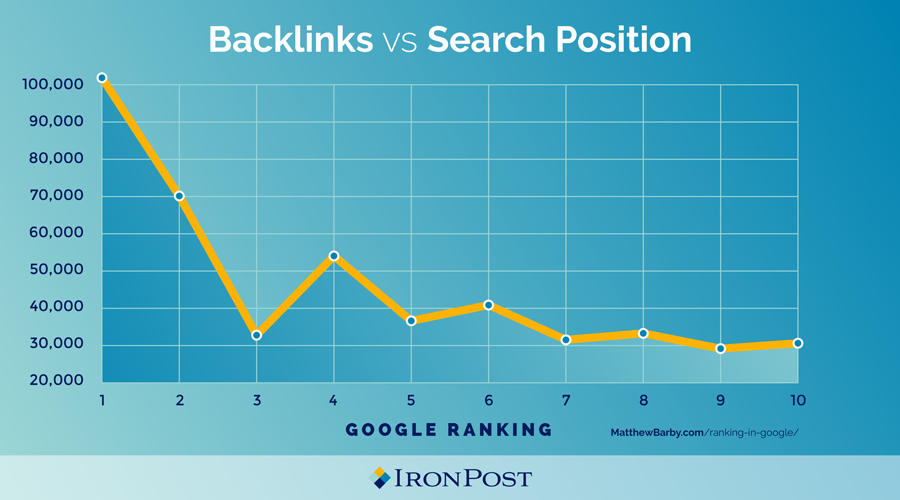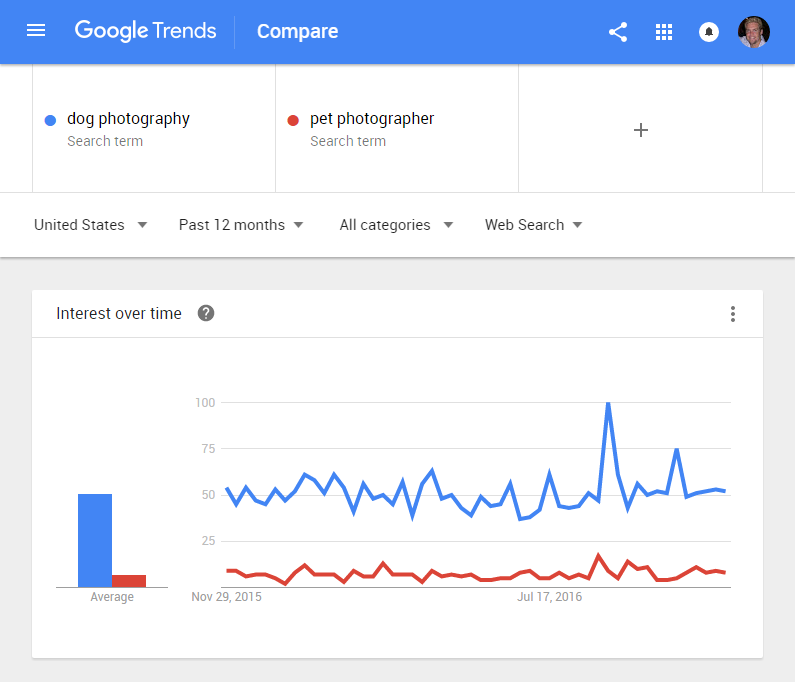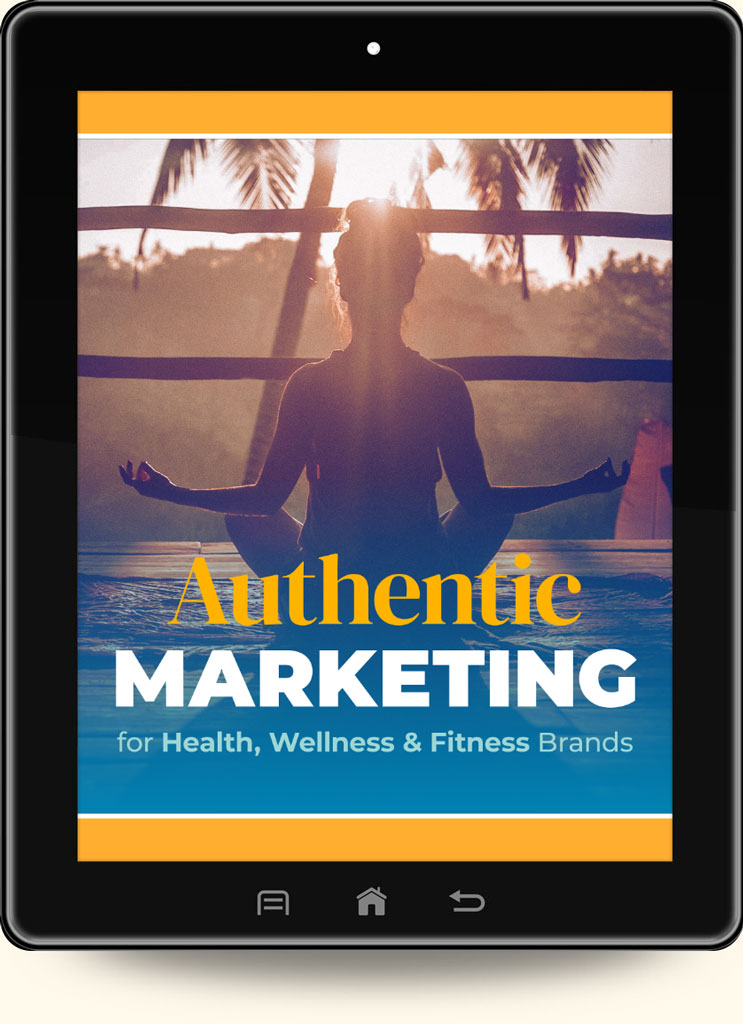Boost your rankings with search terms people actually use. How’s that for a keyword strategy?
You’re well aware that on-page SEO and technical optimization aren’t crucial to rankings anymore. But if you want to drive traffic, having a keyword strategy is still as relevant as ever.
The problem is that you might not know the problem: You’re not getting enough organic search traffic for a whole slew of reasons. It’s not one element and there isn’t a magic SEO bullet that fixes low traffic issues.
Hundreds of dynamic factors are compounding and resulting in other websites earning the traffic you want.
Effective SEO is holistic with many high-leverage techniques under your control. They just don’t have anything to do with blindly repeating keyword phrases.
Old school SEO is not the real villain
The number one ranking factor for search engines is backlinks (not keywords). Optimizing your site for keywords has little effect on your ability to attract high-quality backlinks.
A backlink is an incoming link from another website. You earn a backlink when someone links to your page. When relevant, authoritative websites link to your website, search engines take notice. Google cares less about what you say and more about the sites linking to your content.
One of the primary differences between a search result in the top spot versus the tenth position is the quality and quantity of backlinks. So in a sense, a backlink is a vote of confidence for your page (that search engines pay close attention to).
In a study of a million URLs, the top two Google search results accounted for 38% of the backlinks for page one results. That indicates a strong correlation between the number of backlinks and a URL’s search ranking.
Backlinks help search engines get around the problem of spam. Google and Bing are fighting an endless tsunami of spam with their insanely sophisticated algorithms. They’re looking for trust and relevancy factors that are more reliable than what exists on any individual website.
Unfortunately, search engines adhere to the popular vote closer than you’d like. They follow people’s behavior and not the other way around. So if you want to rise to the top of the search results page, you need quality backlinks from real people. And those links are hard to come by for low traffic sites.
The initial reason why you’re not getting backlinks doesn’t have much to do with search engines. You’re likely not getting backlinks because your site isn’t offering enough value. You’re not sharing the right information with the right audience. You’re not an active part of a larger network so nobody’s paying attention.
Because you aren’t getting backlinks, your well-optimized site is getting pushed down the rankings by popular alternatives. Yes, it’s a popularity contest at the competitive edge of the search engine rankings. This problem leads to the realities of traffic share.
3 greedy positions that refuse to share the traffic
Without quality backlinks, you won’t rank high enough on the search results page to get a lot of traffic. Google’s first page gets about 95% of the clicks so you definitely want to be there.
The top three results get roughly half of the clicks. On average, the top spot gets about ten times more clicks than the tenth result.
Because you don’t have enough backlinks to persuade search engines, your site isn’t in the top three spots. And if it’s not there, it isn’t getting the lion’s share of the traffic. Being on Google’s first page is great. But the last organic spot nets less than 3% of the clicks for each search.
The ugly truths about search competition and volume
You might rise to Google’s first page without backlinks. But you probably won’t rank at the top. And you definitely won’t grab the top spot for competitive searches.
So let’s say you’re in the bottom position of page one and you have a typical website. The average website conversion rate is under 3%. How many searches are required to land a single lead?
A 3% conversion rate with a 3% traffic share requires over 1,000 searches before you capture a lead. For some search terms, it can take months to reach 1,000 searches. But that depends on the popularity of the search term. When searches get more popular, they also get more competitive. As we know, backlinks win the competition.
How to win an uphill battle (using all the right moves)
Without backlinks, you won’t consistently rank high in search. If you don’t rank high in search, how can people find you in the first place?
People can’t give you backlinks if they never find you, right? Well, it’s not that dire of a situation. There’s hope because you have control over many factors.
Be realistic: Anticipate growth but don’t expect to quantum leap from obscurity to the top of the rankings.
You move up the rankings over time with the right decisions, behaviors, and habits. The quality and frequency of your publishing also move the needle.
Anyone that tells you this is a fast or easy process is selling snake oil. Ranking your website is challenging (and light-years from easy). Luckily, there are plenty of ways to outsmart your competition.
Here’s a 5-step keyword guide to optimizing your website content for search engines:
1. Replace keywords with real search terms and natural language
One of the main reasons people aren’t visiting your site is because there’s a disconnect between how they search and what’s on your website. The easiest way to fix this problem is by adding real search terms to your existing content.
Find out how your audience actually searches. What searches are popular and relevant to your content? This is basic market research. Do you understand the natural language of your target audience and ideal customers?
Want more #traffic? Trade a keyword mentality for search terms, intent, and natural language. Share on XCompare keywords with Google Trends
Google Trends enables you to compare up to five search terms. The idea is to compare possible target keywords to see which ones are searched more frequently. You want to find popular target keywords relevant to your content. You also want to consider the search intent of your target audience.
Let’s say you’re a pet photographer who specializes in dog photography. How would you optimize your content for search? When you compare dog photography to pet photographer, it’s obvious that there’s a huge difference in search popularity.
Dog photography has seven to eight times the search volume as pet photographer. A page optimized around dog photography will get far more organic search traffic than a page about a pet photographer.
Yes, you might attract some unqualified traffic by focusing too much on popular search terms. And the intent of various search terms might be different. But you’re better off knowing what terms get more search volume. From there you can make an informed decision about what to add to your content.
2. Leverage popular search terms for SERP visibility
SERP: search engine results page
Once you find a popular search term that relates to your content, add it to your page so that it’s visible in search results. On the results page, each individual result shows a SERP snippet.
You want your audience to literally see their search keywords in your snippet. Words that closely or exactly match the search query are bold in the SERP snippets and more likely to be clicked.
Search terms are bold in SERP snippets:

There are only a few strategic locations to add your search term for maximum impact (without going overboard with keywords):
- Title meta tag
- URL
- Description meta tag
Adding keywords to these elements helps people choose the result that matches their search. Besides helping people choose, search engines give these elements extra SEO weight. The title, URL, and description tell both search engines and people what your page topic is about.
3. Add better topic coverage with LSI keywords
Length is a strength when it comes to search rankings. All things being equal, longer pages (900-2,000 words) outperform their shorter counterparts. The reason is that they have more content depth and better coverage.
An efficient way to add depth to your content is with LSI keywords. LSI stands for “latent semantic indexing” which is a technical way of saying “related.” LSI keywords are related to SEO terms and synonyms. It sounds complex but it’s not.
LSI keywords are super easy to find. After you identify a popular search term using Google Trends, simply pop that term into Google or Bing. The search engine will provide a list of related searches at the bottom of the SERP. Those suggestions are LSI keywords.
If you want to dig deeper, you can use a tool like LSIGraph to generate even more ideas. But it’s a balancing act between adding depth and derailing your message with too much coverage. Selecting a few LSI keywords from Bing, Google, and LSIGraph is all you need to add coverage to your content.
Your target keyword and three LSI keywords from each source give you ten keywords to mix and match with your content. Ten is plenty for one page.
4. Use popular search terms for image name optimization
An underutilized SEO technique is image naming. Web designers and developers underestimate the value of adding popular search terms and LSI keywords to image filenames and alt attributes.
That’s not always their fault. It’s not uncommon for keyword exploration to occur after the initial development stages (or not at all). Luckily, it’s easy to rename and optimize images after a page has been published. You’re not locked into bad filenames and alt attributes.

When it comes to image filenames, you’re safe to go heavy with keywords. As long as you’re in the ballpark, it doesn’t matter how keyword dense your filenames are. Anything is better than DSC000042.jpg.
So feel free to pour on the keywords. Adding a dash between words helps search engines index your images. Here’s an example of adding your target keyword and location for extra local search optimization: black-lab-puppy-dog-photography-scottsdale-arizona.jpg.
With image alt attributes, it’s better to split the difference because they serve a dual purpose. Alt attributes help with accessibility as well as describing your images to search engines. Make sure the alt text describes the image to the visually impaired while containing a healthy amount of keywords. For example: “High-resolution photograph of a black lab puppy in Scottsdale, Arizona.”
5. Follow best practices for H1 and heading tags
Use your popular search term once in the H1 tag. But don’t forget the other HTML heading tags. Headings carry a little more SEO weight than regular paragraph text. They’re great places to sprinkle in your LSI keywords.
Besides search value, headings separate your content and help with usability. People will understand your content better when you use subheadings to break up walls of text. Your content will be easier to scan and more organized.
Other than the H1 tag, there aren’t significant SEO differences among headline tags. From a design perspective, you can add visual interest by using a variety of heading tags. But if you like a consistent look, there’s nothing wrong with sticking to H2 tags to broaden your keyword coverage.
How to win business with boring research
You might feel like this is a lot of work. You’re right, it is. But if your site isn’t performing well in search, you have to make changes.
Keyword research is one of the best investments you can make. Research and strategy are the hallmarks of effective marketing. So if you want to do it right, don’t rely on old school SEO.
Instead, put your money on your business savvy and ability to read your audience. If they aren’t clicking, it means one of two things. Either they can’t find you or you’re not offering enough value.
Either way, the path begins with market research. So do your homework. Image how good you’ll feel when people find, share, and like your content. You never know who you’ll attract or how they can impact your business success.









